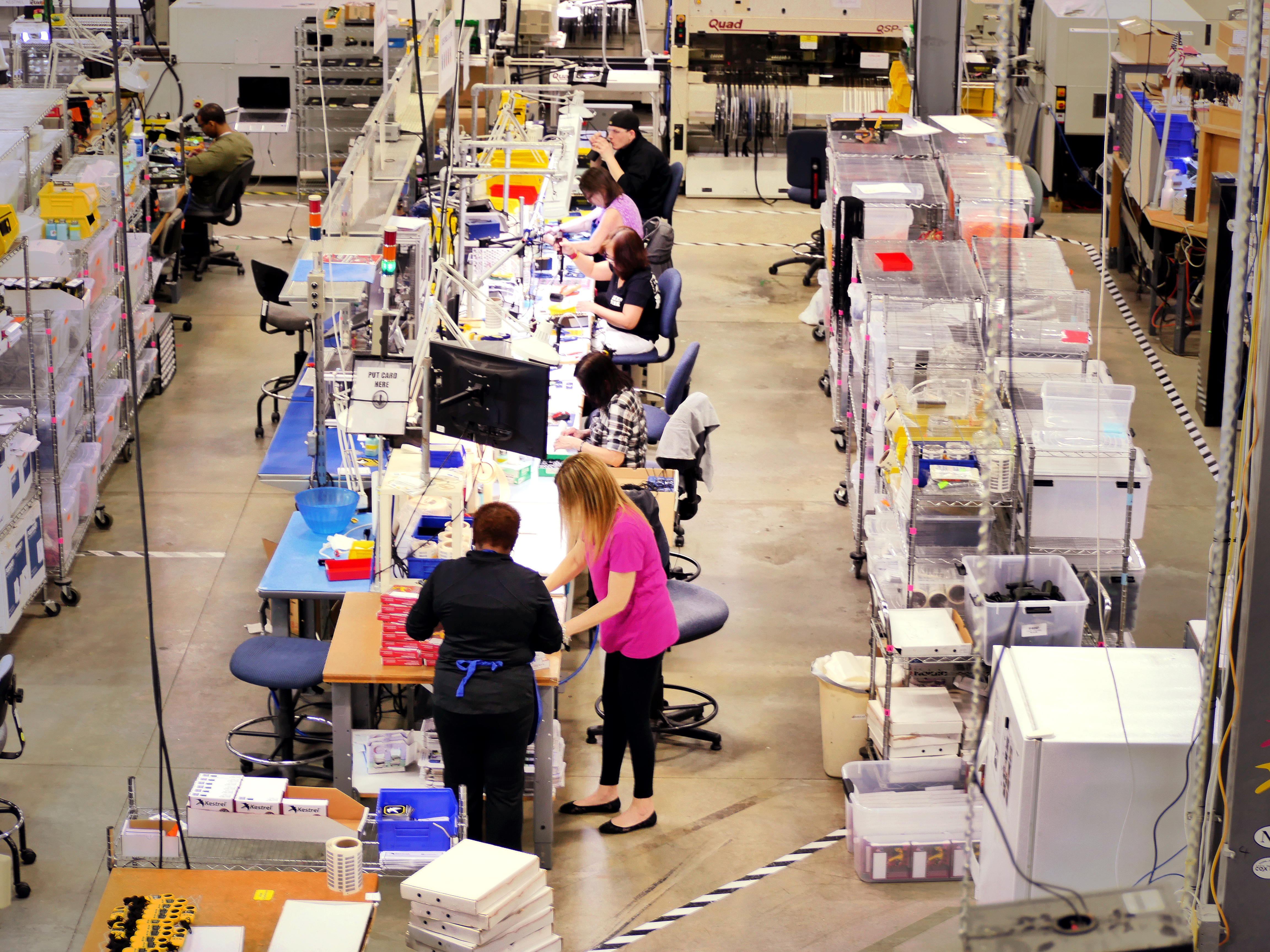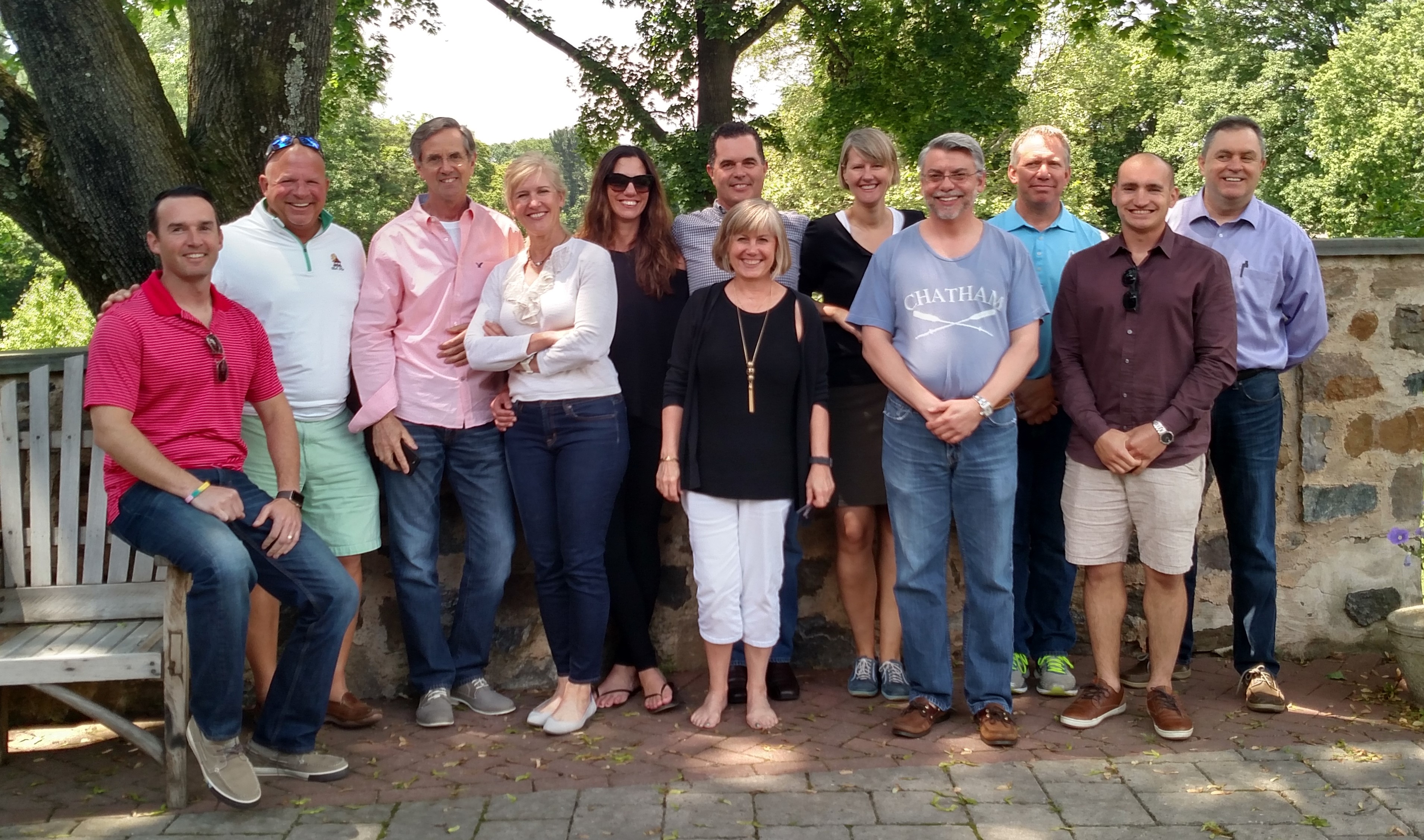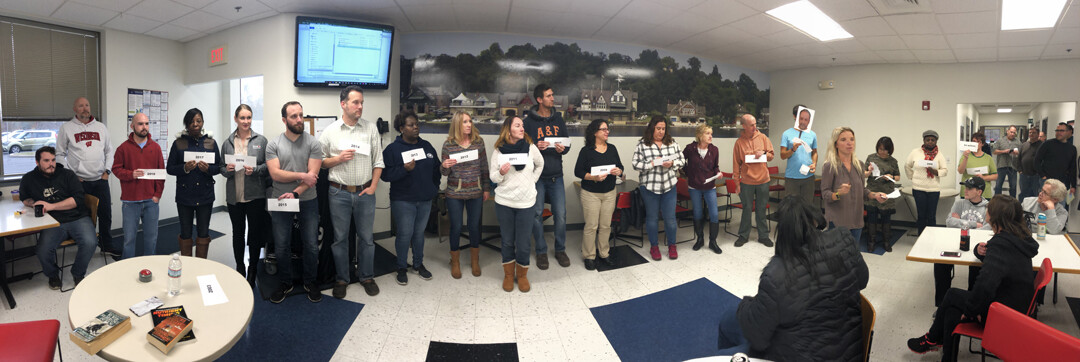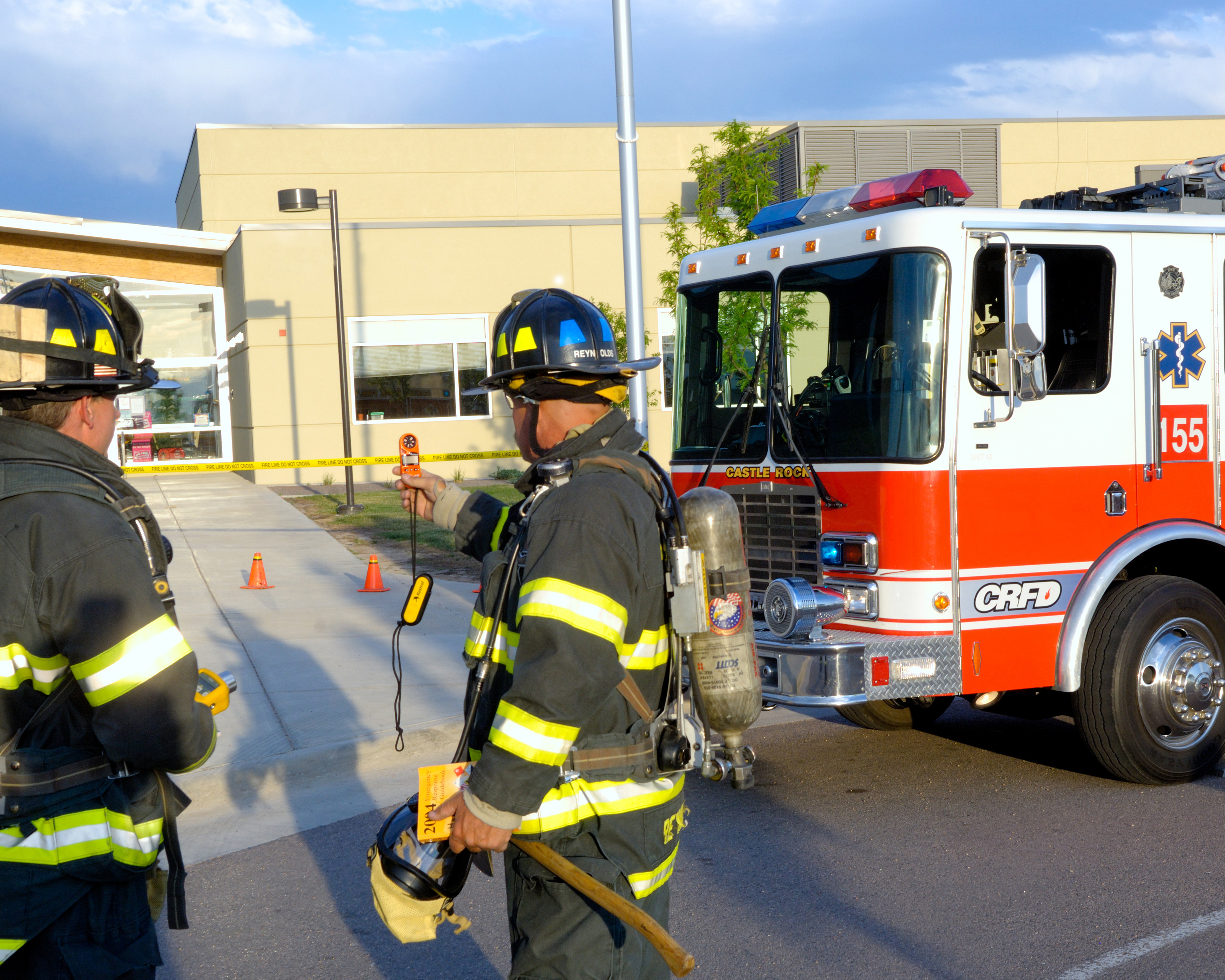
Accelerating Growth with Strategic Leadership, Systems Thinking and a Dedicated Team
Nielsen-Kellerman is an award-winning U.S. manufacturer of high-performance electronics, employing almost 100 people in the Greater Philadelphia area.
 Founded in 1978 by Richard Kellerman and Paul Nielsen to address the needs of the competitive rowing market, the company has since expanded its sports instrumentation and added Kestrel Weather Instruments serving many markets including agriculture, firefighting, research, and tactical and competitive shooting.NK’s growth rate has accelerated significantly in the last seven years, with a Compound Annual Growth Rate (CAGR)
Founded in 1978 by Richard Kellerman and Paul Nielsen to address the needs of the competitive rowing market, the company has since expanded its sports instrumentation and added Kestrel Weather Instruments serving many markets including agriculture, firefighting, research, and tactical and competitive shooting.NK’s growth rate has accelerated significantly in the last seven years, with a Compound Annual Growth Rate (CAGR)  exceeding 12% and 2018 growth at 20%.
exceeding 12% and 2018 growth at 20%.
CEO Alix James and I recently sat down to talk about her ten-year journey at the helm of NK as well as her plans to more than double the company over the next few years.
What was the journey like before you took over as CEO?
“After my step-father and his partner started the company, it took over 30 years to get to $10 million. As is often the case with founder-led businesses, they focused on growing within their resources – reinvesting cash flow rather than taking on debt. They generated steady growth, but it was typically in the 5% year over year range or less, with fairly low profitability. I’m not taking a thing away from them – the business both survived and grew and established a great reputation while developing new products. And while they had ups and downs, even after the financial collapse of 2008, they only took a 2% step backward, in part because they had expanded the product lines and diversified into many different markets, including the military market.”
What happened when you took over as CEO?
 “I stepped into a leadership role in 2008, first as COO, and shortly thereafter as CEO. I had pretty much grown up in the company, having joined after a few years practicing as an attorney in California. I had learned a secure way of doing business that we’d been following successfully for years. Starting from that foundation, and with the owners’ support, my team and I focused on establishing consistent methodologies for picking the right projects and products to develop.
“I stepped into a leadership role in 2008, first as COO, and shortly thereafter as CEO. I had pretty much grown up in the company, having joined after a few years practicing as an attorney in California. I had learned a secure way of doing business that we’d been following successfully for years. Starting from that foundation, and with the owners’ support, my team and I focused on establishing consistent methodologies for picking the right projects and products to develop.
Over time, we became more effective at executing those projects. Our thinking then was that our current revenue set the size of the pipe for development. So, our focus was on getting better at fitting things thru the pipe. While conservative, simply adding more structure and consistency allowed us to increase our growth rate significantly.”
 “Now we’re challenging ourselves to take things up another pretty big notch. We’d like to double the business again in 5 years. I don’t think we need to act like a startup and take wild swings at bat, but we do need to figure out how to add the right resources. And – get a bit more daring, while not forgetting the core learning that got us where we are today. It’s definitely a gear change, not a pivot.”
“Now we’re challenging ourselves to take things up another pretty big notch. We’d like to double the business again in 5 years. I don’t think we need to act like a startup and take wild swings at bat, but we do need to figure out how to add the right resources. And – get a bit more daring, while not forgetting the core learning that got us where we are today. It’s definitely a gear change, not a pivot.”
So what are some of the changes that you’re making to Scale Up more quickly?
“To take it to the next level last year we developed our ‘accelerated plan’. We’ve added people, and also engaged more outside resources. The downside is that if we don’t succeed, we’ll generate worse results. We’re adding close to a million dollars in payroll and development expenses. Just to cover that investment we have to add another 10% to the top line. But I’m excited that we have the support of our new investor partners, Clearview Capital. They want us to grow and they’re supporting us. It doesn’t hurt that our 2018 results seemed to support our strategy, with one of our strongest growth years ever.”
 Other than the R&D challenges, what are the issues that you anticipate having to grapple with as you look ahead?
Other than the R&D challenges, what are the issues that you anticipate having to grapple with as you look ahead?
“I think no matter how long I’m in a leadership role, I’ll need to wrestle with my own Type A personality and my need to get an A+ on everything. You have to be willing to fail a little bit if you’re going to grow. With our previous mindset, we were so conservative that we essentially never failed, but we also didn’t try some things that might have been big successes. It helps that I’m mature enough at this point that I recognize that, and that a big part of my role is giving people confidence and permission to fail, while still asking the right questions. Some of the projects won’t work but that will be okay.”
“Most importantly, I’ve got confidence in my team’s ability to deliver and perform. We’ve worked hard to put in the right systems including LEAN and Agile and we’re so process-oriented, I don’t think we’ll need to fundamentally change our processes and systems-thinking approach.”
How about at the company-level?
“First and foremost we need to change from a scarcity mindset to one that’s more expansive. When my software guys says, we need more resources because we’re behind, I say, okay – find more resources. Which of course can be very challenging in the current economic and talent environment, but he’s smart about reaching out to past contacts and so far, it’s working.”
“Having a [Pat] Lencioni Weekly Tactical meeting structure in place, where each member of the leadership team focuses on where they’re stuck helps. And if we can’t resolve those on the spot, we schedule a Strategic Meeting where the right people work thru the constraints. OR – I’ll say ‘I’m giving you authorization to go solve this. And come back to me with the solution.’”
She adds, “Having the rhythm in place where everyone checks in and your team is accountable to own the issues is part of the foundation that is letting us execute this shift into overdrive.”
 What do you see as your job as CEO now? How will that change going forward?
What do you see as your job as CEO now? How will that change going forward?
“A big part of my job will be recognizing just how fast can we grow without driving people crazy. We’re definitely doing more faster, but there’s no amount of pile on that can take a 9-month software development project and make it happen in 3.”
“One of the other things we’re doing is more market-specific products and that requires a lot more from the Product Management, Sales and Marketing team. The danger in an engineering company is the ‘if we build it, they will come mentality’. You can’t depart entirely from how you’ve done things and you NEED some type of constraint to innovate – and get people to think outside the box.”
She grins and then says, “Back to Lencioni and his focus on teams. You have to know people well enough to know if they’re just working through challenges out loud and need an ear OR if they’re in a real panic. It takes a pretty high level of trust to ensure that everyone feels they can both “think out loud” and be honest when they’re hitting their limits. We have that type of team.”
 What’s the biggest ‘stretch’ for you as a leader?
What’s the biggest ‘stretch’ for you as a leader?
“Right now, in addition to cranking things up inside our walls, we’re making a real effort to add to our company through acquisition. Executing on the M&A piece is a critical part of our growth plan, and it’s where I’m still learning. Since we’re mostly looking at other products companies, the likelihood is that they will have operations and people we won’t want to relocate.”
“In most cases, we believe the opportunity in acquisition will be to provide additional resources, and perhaps strategic structure, to help them grow faster. We’ll also need to hit the ground running to demonstrate that the new partnership is a good thing for everyone. That’s a place where I could really see the power of a One Page Strategic Plan or other focused strategic planning tool. As Shannon Susko says, just “gutting it out” together to get a plan down on paper will help create and sustain alignment and build cohesiveness, even if we can’t be there all the time.”
“In addition, every fourth quarterly planning session we go off-site and try to throw our thinking further into the future, and open the door to new approaches. Innovation is tough to facilitate, and we’re not afraid to experiment with the format of that meeting. But, if we have the opportunity to help guide an acquisition in establishing a strategic planning process, we may need to be a bit more pro forma with the meeting structure to ensure it gets well-established.”
Any other words of wisdom for other growth-oriented CEO’s?
 “Don’t let work completely consume you. You’ve got to do whatever it is that recharges your batteries so you have the energy your team needs you to provide.” (Alix competes in both rowing and dressage.)
“Don’t let work completely consume you. You’ve got to do whatever it is that recharges your batteries so you have the energy your team needs you to provide.” (Alix competes in both rowing and dressage.)
“And even when you’re really deep in your work, try to find a little space for giving back. I know I’m going to have time to really work on some give-back projects in the future, but I sometimes struggle with whether I am doing enough to make the world a better place right at the moment. Then I remind myself that providing good, secure, satisfying jobs to our people is a solid check mark in the good column, as is supporting the continued growth of manufacturing in the United States through sharing what we’ve learned. I know we’ve had an impact there. We give a lot of plant tours, and the feedback is always that other company leaders learned things to take home to their operations. As much as it sometimes feels like an intrusion into my busy day, I always wind up seeing something about our own business in a new light, and the connections we make wind up being helpful in the future.”
 “And finally, be lucky and smart in your relationships. I’m exceedingly fortunate in having a husband who appreciates my success and understands the level of work required to make it happen. I also feel very fortunate to have cultivated relationships with other smart business women, and most particularly you as my coach and leader of the CEO Think Tank® peer group. You, and the other CEO Think Tank® members serve as my “business therapist”, which sometimes gets pretty personal when you’re talking about the loneliness at the top. I tell every young leader that they HAVE to find a peer group to support and guide them to be successful. No matter the industry, the people, culture creation, and team-building requirements are the same, so your peer group does not have to be just people from your industry. In fact, I think it’s helpful to build a peer group from many different industries. But the camaraderie and support is essential to keeping yourself sane.”
“And finally, be lucky and smart in your relationships. I’m exceedingly fortunate in having a husband who appreciates my success and understands the level of work required to make it happen. I also feel very fortunate to have cultivated relationships with other smart business women, and most particularly you as my coach and leader of the CEO Think Tank® peer group. You, and the other CEO Think Tank® members serve as my “business therapist”, which sometimes gets pretty personal when you’re talking about the loneliness at the top. I tell every young leader that they HAVE to find a peer group to support and guide them to be successful. No matter the industry, the people, culture creation, and team-building requirements are the same, so your peer group does not have to be just people from your industry. In fact, I think it’s helpful to build a peer group from many different industries. But the camaraderie and support is essential to keeping yourself sane.”


 Other than the R&D challenges, what are the issues that you anticipate having to grapple with as you look ahead?
Other than the R&D challenges, what are the issues that you anticipate having to grapple with as you look ahead?
 What do you see as your job as CEO now? How will that change going forward?
What do you see as your job as CEO now? How will that change going forward? What’s the biggest ‘stretch’ for you as a leader?
What’s the biggest ‘stretch’ for you as a leader?